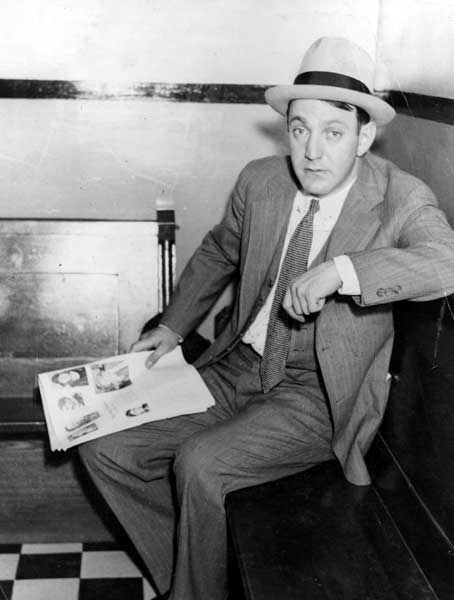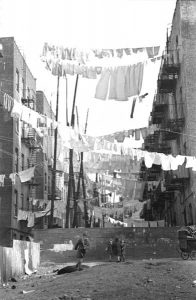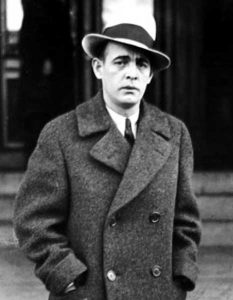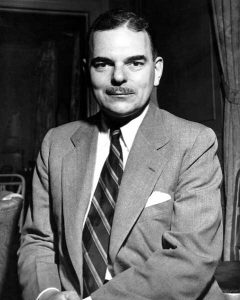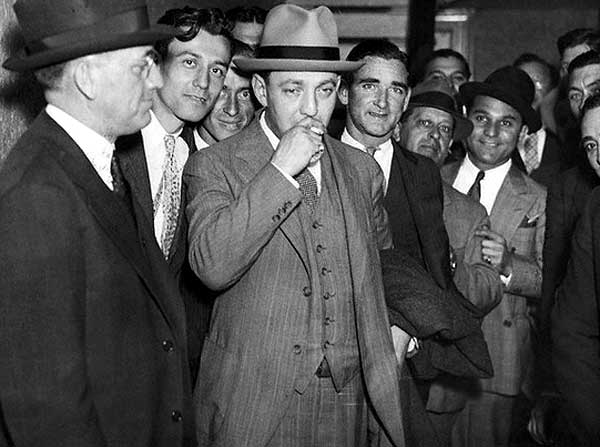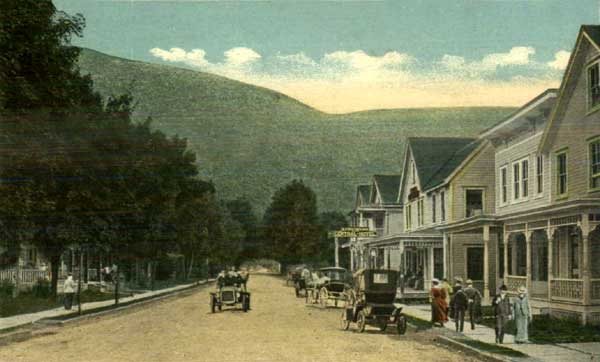Dutch Schultz was a New York City-area mobster of the 1920s and 1930s who made a fortune in criminal activities. Before he was killed, he was said to have buried a treasure trove in the Catskill Mountains.
He was born Arthur Simon Flegenheimer on August 6, 1901, in the Bronx borough of New York City to German Jewish immigrants Herman and Emma Neu Flegenheimer. Early on, his father abandoned the family, as Emma was listed as divorced in the 1910 census. Arthur dropped out of school in the eighth grade to help support his mother and younger sister. He then worked various jobs before joining Schultz Trucking in the Bronx around 1916, where he worked for the next three years.
Working in the slums of the Bronx, he also started his criminal career with petty burglaries and theft, which led to his arrest at the age of 17. He was sent to prison for burglary, where he served 17 months.
When he was released from prison in December 1920, he returned to work at Schultz Trucking. With the start of Prohibition, the shipping company began smuggling liquor and beer into New York City from Canada. During this time, he began associating with known criminals and started to go by the name of Dutch Schultz because, as he put it, Flegenheimer was too long for newspaper headlines. Some of the criminals he came into contact with were organized crime bosses Lucky Luciano and Legs Diamond. After a disagreement with Schultz Trucking, he left and went to work for their Italian competitors.
In the mid-1920s, Schultz went to work as a bouncer at the Hub Social Club, a small speakeasy in the Bronx owned by a gangster named Joey Noe. The two soon formed their own gang, opened more illegal drinking joints around the Bronx, and ran bootlegging operations for New York City bars. The pair were also coercing rival establishments to buy from their gang, and at one point, Schultz kidnapped and tortured a saloon owner who refused to buy from him. Afterward, the Noe-Schultz gang met little opposition as they expanded.
Though the Noe-Schultz operation flourished in the Bronx, the pair saw plenty of opportunities across the river in Manhattan. They soon expanded their operations and moved their headquarters to Manhattan’s Upper West Side. However, this brazen move led to a bootleg war with New York’s Irish Mob led by Jack “Legs” Diamond.
In retaliation for invading his territory, Diamond ordered a hit on Noe, who was gunned down outside of the Chateau Madrid on 54th Street in October 1928. Though Noe managed to survive the ambush, he died a month later. Crushed by losing his friend and mentor, Schultz retaliated by killing Diamond’s close associate Arnold Rothstein, a kingpin in the Jewish mob, in November 1928.
By this time, Schultz was supplying speakeasies in the Bronx with $2 million worth of alcohol and was bringing in large profits. He was also clashing with other gangs as his bootlegging enterprise grew and dealing with conflicts in his own gang. In 1930, one of his enforcers, Vincent Coll, demanded to be made an equal partner, and when Schultz refused, Coll formed his own crew with the ultimate goal of murdering Schultz and taking over his territory. This led to another bloody gang war, but Coll was killed — reportedly by members of Schultz’s gang — in February 1932. In the meantime, Jack “Legs” Diamond had also met his bitter end in 1931, reportedly at the hands of one of Schultz’s thugs.
By this point, the federal government began to pursue Schultz, who had entered into the illegal gambling market, to diversify his interests. He was also extorting New York restaurant owners and workers, using strong-arm tactics such as beatings and stink bomb attacks.
Finally, the Feds indicted Schultz in 1933 on income tax evasion charges. He spent months hiding out before finally surrendering in November 1934. The following year, he was tried twice for income tax evasion, but two juries could not convict him. The first case ended with a hung jury, and he was acquitted in the second one.
However, New York’s special prosecutor Thomas E. Dewey then wanted to prosecute Dutch Schultz for his illegal policy racket.
During these trials, Schultz’s defense costs were high, and he reduced the commissions he paid to those running his rackets to bolster what he called the “Arthur Flegenheimer Defense Fund.” This angered many of his gang members, who held a mass protest meeting and declared a strike of sorts. When Schultz refused to meet their demands, his cash flow dried up, and the mobster was forced to back down. However, his actions permanently damaged his relationships with both his own gang members and other associates. One of his chief lieutenants soon met with Sicilian gangster Charlie “Lucky” Luciano, who planned to take control of Schultz’s activities.
In the meantime, Schultz wanted to kill U.S. Attorney Thomas Dewey, but the National Crime Syndicate unanimously agreed against the idea, with Luciano arguing that a Dewey assassination would precipitate a massive law enforcement crackdown. An enraged Schultz said he would kill Dewey anyway and walked out of the meeting. Afterward, the Commission hired the infamous group Murder Inc. to carry out a hit on Schultz.
Whether Dutch Schultz feared going to jail or anticipating his own death, he had a special airtight and waterproof safe made into which he placed an estimated $7 million in cash, bonds, and gold. He and his personal bodyguard, Bernard “Lulu” Rosenkrantz, drove the safe to an undisclosed location near Phoenicia, New York, and buried it.
A short time later, on October 23, 1935, Schultz, along with Rosenkrantz, Otto Berman, his accountant, and Abe Landau, his chief lieutenant, were having dinner at the Palace Chop House restaurant in Newark, New Jersey. While Schultz was in the bathroom, two Murder, Inc. hitmen named Charles “The Bug” Workman and Emanuel “Mendy” Weiss entered the restaurant. The pair opened fire on the Schultz gang members, hitting all four before they fled. None of the men died at the scene and were transported to the hospital. However, all would die within the next two days.
Schultz was baptized and received the last rites from a Catholic priest just before he went into surgery. He had been hit in the spleen, stomach, colon, and liver. Afterward, he lingered for hours but died on October 24, 1935. He was just 33. He was buried in the Roman Catholic Gate of Heaven Cemetery in Hawthorne, Westchester County, New York.
Before his death, he gave a series of rambling and cryptic statements, but he never named his killer. However, he did make several references to the buried treasure, such as:
“I’ll get you the cash out of the box… there’s enough in it to buy four-five more… Lulu, drive me back to Phoenicia… Don’t be a dope Lulu, we better get those Liberty bonds out of the box and cash `em… wonder who owns these woods?… he’ll never know what’s buried in ‘em.”
Though there is no evidence that either Schultz or Rosenkrantz had ever talked about the safe nor revealed its hidden location, searching for his money became the focus of many of his enemies.
The plain-speaking Schultz was closed-mouthed about his wealth, but he made a fortune in his illicit activities and was known to be extremely frugal. Unlike other gangsters of the time, he didn’t dress flashy, tip lavishly, or purchase expensive homes or cars. In fact, he was known to have been very tight with his money except where bribery was concerned. However, no money, goods, investments, bonds, or anything else of value was found when he died, which supported the hidden “treasure” story.
Locals in Phoenicia, New York, were questioned at the time, and some reported having seen two men wearing fedora hats with shovels in a grove of pine trees along Esopus Creek near Phoenicia.
Soon, there were many versions of the story, most of which mentioned Phoenicia, and some referenced a map that Lulu Rosenkranz had supposedly sketched.
One version was told some 50 years ago by a local old-timer who claimed that he had seen Schultz and Rosenkranz when they stopped for lunch at the Phoenicia Hotel. After the pair had eaten, they drove half a block before turning right onto Route 214. The gangsters allegedly traveled north along Stony Clove Creek for about eight miles. They stashed the safe beneath the skull-shaped rock formation known as the Devil’s Face before returning to Phoenicia by three o’clock that afternoon.
Whether the tale of hidden treasure is true or not, many people have searched for it in the Catskills over the years. In recent years, the mystery has been featured in films and documentaries. Psychics have even been utilized to help find the lost loot.
Today, it is said that the treasure has never been recovered and remains hidden in upstate New York.
© Kathy Alexander/Legends of America, updated January 2024.
Also See:
Gangsters, Mobsters & Outlaws of the 20th Century
Prohibition in the United States
Sources:
All That’s Interesting
Best Life
Catskill.net
Biography.com
Wikipedia

